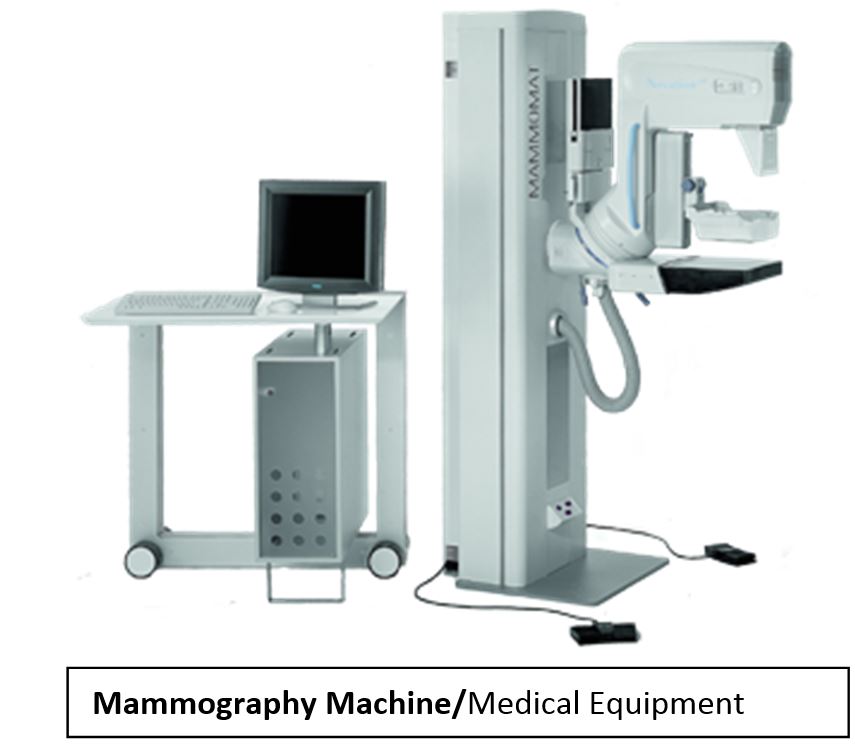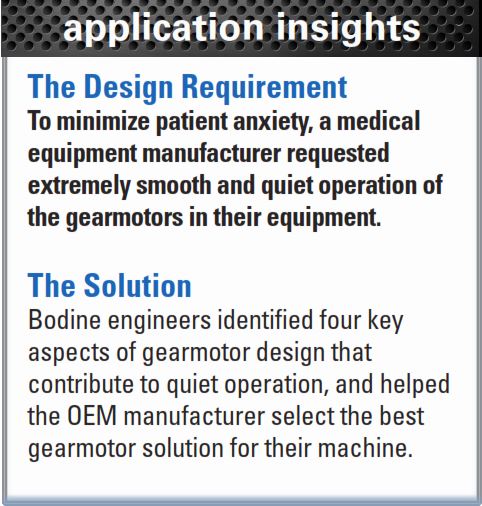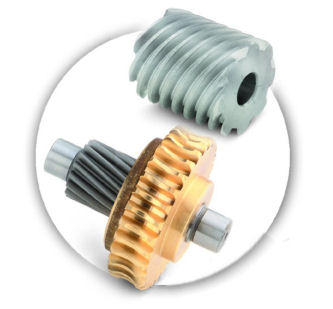 Gearmotors in mammography equipment are used to raise and lower the scanner to accommodate the patient’s height. The primary design objective is smooth and quiet operation. Our team of design engineers addressed four aspects of the gearmotor design that contribute to quiet operation.
Gearmotors in mammography equipment are used to raise and lower the scanner to accommodate the patient’s height. The primary design objective is smooth and quiet operation. Our team of design engineers addressed four aspects of the gearmotor design that contribute to quiet operation.
Worm Gearing
Bodine recommended a right-angle gearmotor with worm gearing. The sliding tooth action of worm gearing is generally quieter than the rolling action of spur and helical gearing. A second advantage for the application was that worm gears lock in place when there is no power to the gearmotor.
Machined Parts
By machining all mating surfaces of the motor and gearhousing, Bodine insured that the worm and helix gears, the motor armature and the motor end shield are precisely aligned. Better gear alignment translates into less noise. Unlike many gearmotors on the market today, all Bodine gearmotors feature machined surfaces throughout.
Ball Bearings 
Our engineers recommended ball bearings to minimize thrust loads on the driveshaft. Thrust loads can make the driveshaft shift back and forth within the gearbox. Ball bearings are pressed onto the driveshaft, locking it in place.
Quieter Brush and Commutator Components
Bodine engineers took several steps to reduce brush noise as much as possible. Special commutators were designed to prevent vibration and to ensure smooth brush contact. The brush holders were locked into the gearmotor endshield to prevent any “chatter”. Brush material and brush shape were optimized to minimize noise.
Bodine Electric engineers bring 110 years of application engineering and problem solving experience to a wide range of applications in industries as diverse as medical, packaging, industrial automation, and solar powered outdoors equipment. We look forward to working with you on your next FHP gearmotor design challenge.
To learn more about Bodine Gearmotor Solutions in Medical Applications,
click here.
Copyright Bodine Electric Company © 04/2015. All rights reserved.

